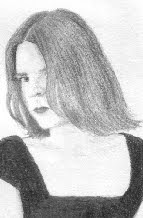 In 1966 carbon dating reveals a minor icon in the Winter Palace to be a fake. Rather to his surprise, the head of the KGB is ordered by Brezhnev to spare no expense in retrieving the original. This isn’t for the sake of the painting, but for a document believed to be concealed inside it; one which two countries would do anything to lay hands on and which will be useless if not found within a month. A couple of weeks later, Adam Scott inherits an envelope which his father’s will warns should only be opened on condition that no word ever be breathed of its contents. Adam hopes said contents will clear the taint of reputation that drove both father and son to resign from the army. Once translated, the papers lead to a Swiss bank vault containing a minor Russian icon, and propel him into murder, mayhem, and a chase across Europe with a ruthless KGB agent at his heels.
In 1966 carbon dating reveals a minor icon in the Winter Palace to be a fake. Rather to his surprise, the head of the KGB is ordered by Brezhnev to spare no expense in retrieving the original. This isn’t for the sake of the painting, but for a document believed to be concealed inside it; one which two countries would do anything to lay hands on and which will be useless if not found within a month. A couple of weeks later, Adam Scott inherits an envelope which his father’s will warns should only be opened on condition that no word ever be breathed of its contents. Adam hopes said contents will clear the taint of reputation that drove both father and son to resign from the army. Once translated, the papers lead to a Swiss bank vault containing a minor Russian icon, and propel him into murder, mayhem, and a chase across Europe with a ruthless KGB agent at his heels.
This book is notorious in our house. I brought it home nearly seven years ago and after reading it, lent it to my mother. One afternoon she decided to read “just one more chapter” - and finally put it down when she finished it twenty-three chapters later. It’s not a book to read on public transport - I tried that myself recently and if I’d been travelling alone could well have missed my station - and is probably best left for a free weekend. All the ingredients of a first-rate thriller are there - the fate of the free world at stake, a tight deadline, a homicidal and well-funded opponent, an innocent bystander dropped into the middle - and they all come together beautifully, with enough grounding in historical fact to make it seem plausible (while you’re reading it, at least). The chase takes a while to get started, but since Adam and Romanov are in the same book it’s obvious they’re going to cross paths eventually ... and until that happens, that deadline just keeps getting closer. Hero and villain are a well-matched pair; both smart, tough, and adept at using whatever - or whoever - comes to hand (the difference being that one favours subterfuge and the other violence).
Despite the life-or-death stakes there’s still room for levity among the secondary characters, particularly an endlessly talkative mustard salesman. My favourite of all was the closest thing the book has to a heroine: Robin Beresford, a double-bass player who has a flair for deception and the balls to stand up to Romanov. One point greatly puzzled me until I looked it up (turns out that, yes, it is possible to put the Union Jack upside-down). And I’m a little ambivalent about the ending. On one hand, it was fitting, but on the other, I wished it could have been a certain someone else who did it. (Which is terribly vague and unhelpful, I know, but I do hate to give too much away!)
Rating: A-

















No comments:
Post a Comment